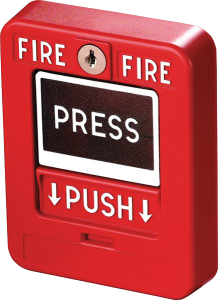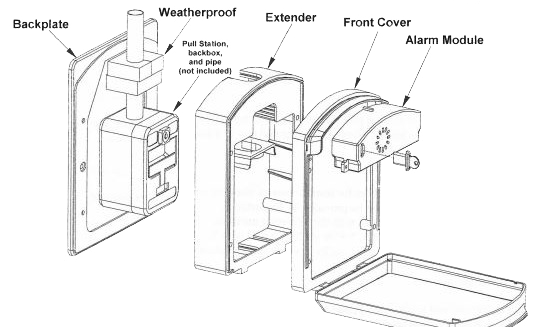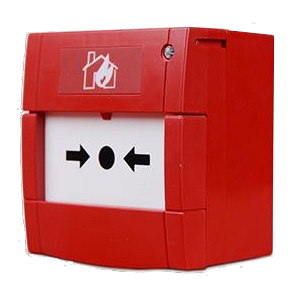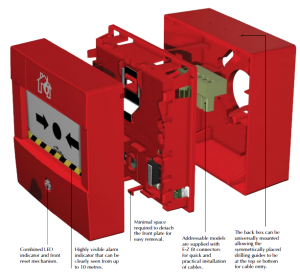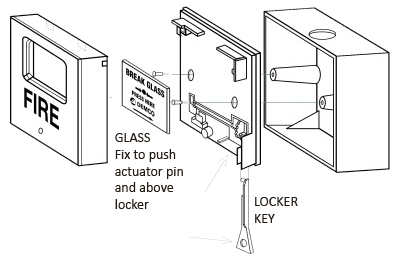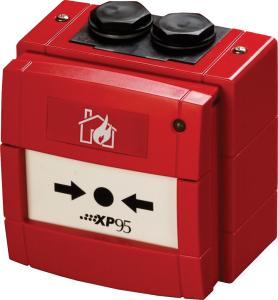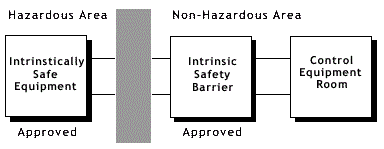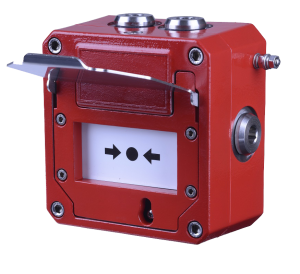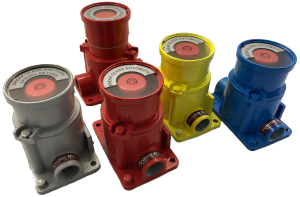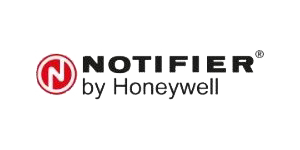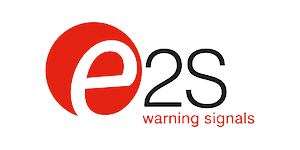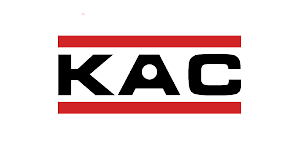
Manual Call Point is a device for the manual initiation of an alarm. They are used to allow building occupants to signal that a fire or other emergency exists within the building. The manual element of the device thus means that it needs to be activated by hand. Some of the common Manual Call Point’s types, regardless of their communication method, Addressable or conventional, include: Pull Station and Manual Call Point.
Pull Station |
|
|
|
This type of manual fire alarm activation device is more commonly found in US and Canada. The manual device is activated by pulling a lever. The pulling lever can be designed to have a single action mechanism or dual-action mechanism. In dual-action types, the user has to lift up first then pull down, which discourages mishandling. The device can only be restored to its original position with a special key tool. |
Manual Call Point |
|
|
|
These are European standard manual fire alarm activation device that are commonly adopted worldwide (except North America). It is made of a plastic enclosure with a plate that will drop down when pushed. When the element is pushed, it will complete a circuit which notifies the fire alarm system. Like its fire alarm pull station counterparts, it can only be restored to its original position with a special key tool. On the other hand, Manual call points are used to operate by means of a simple button press or when glass is broken revealing a button. |
Special Applications
Intrinsically Safe Manual Call Point |
|
|
|
It is used in hazardous locations where explosive levels of gas or vapors are normally or potentially present. Intrinsically safe detectors must be compatible with the system control panel for proper use. An intrinsically safe barrier must be installed at the point where the intrinsically safe circuit connects to the fire alarm control panel. The barrier limits the available voltage and current available on the circuit to safe levels.
|
Explosion Proof Manual Call Point |
|
|
|
Electrical equipment sometimes must be installed in areas where combustible vapors and gases are used or may be present. These are commonly referred to as hazardous locations. When equipment must be installed in hazardous locations, there are strict requirements for the construction of the installation, including materials and design requirements. An Explosion Proof classification for a sensor/transmitter means that the housing has been engineered and constructed to contain a flash or explosion. Such housings are usually made of cast aluminum or stainless steel and are of sufficient mass and strength to safely contain an explosion should flammable gases or vapors penetrate the housing and the internal electronics or wiring cause an ignition.
|
Applicable Notes
- Manual Call Points need to be easily accessible for people in case of fire. Hence, the best practice is to install them in exit pathways where people can initiate them when fleeing a fire. Standards recommend a travelling distance between 30m and 45m from the nearest call point. They are also usually mounted at a height between 1.2m and 1.6m from the floor.
- To positioning the Manual Call Points, related standards such as NFPA 72 or EN54 shall be considered.
- Manual Call points (MCP) shall be of the break-glass type with protection against accidental operation.
- The MCP’s shall be provided with a key operated test facility to enable periodic testing of the alarm contacts without the need to remove or break the glass.
- The call point shall return to its normal condition when the frangible element is replaced.
- A brass hammer or similar operating device shall be provided for call points with means of attachment. Such operating device shall not be capable of producing a spark when struck against the body of the call point.
- As with most fire alarm system devices, manual call points used in the context of fire emergency would be color-coded in red. In other instances, such as access control or other non-fire related matters, colors such as green, yellow or blue may be used. A simple guideline of color is listed as below:
Red : Fire System
Orange : Smoke & Vent Control
Green : Emergency Door Exit / Access Control / Lift & Escalator Control
Yellow : Suppression System Activation / General Evacuation
Purple / White : Others
- To prevent inadvertent ignition of flammable gases and vapors by electrical equipment, the two most common methods of protection are Explosion Proof (denoted by “d or e” in the ATEX and IECEx Explosion Classifications) and Intrinsically Safe (denoted by “i”).
Our Services
SISICO is able to offer an extensive range of Manual Call Point to suit your specific environment from below mentioned companies:

